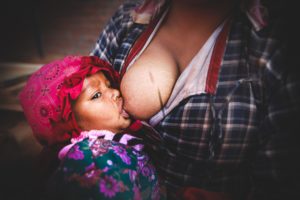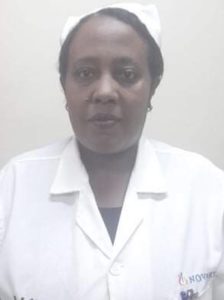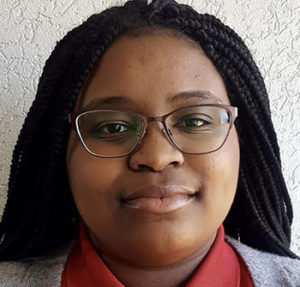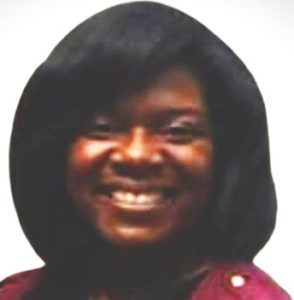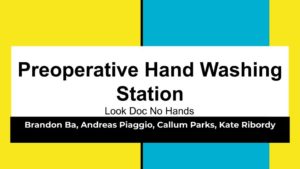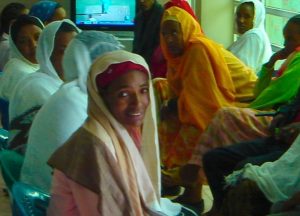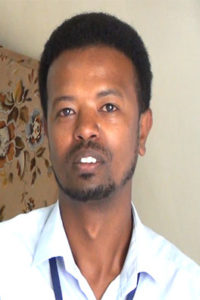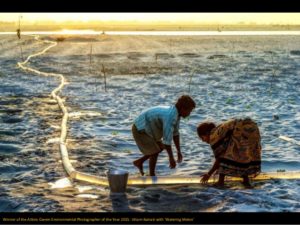Global Health for Women: 70% of Frontline Workers are Women
Merry Christmas!
I hope you are safe and happily sharing the holidays with your loved ones. Let’s take a moment to consider those who are less fortunate.
There is undeniable proof that the global scope of the pandemic has become a mind-altering, consciousness-building reality. The COVID-19 zeitgeist has resulted in displays of enormous will, great effort, and determination. The good news is the development of and distribution of vaccines against the coronavirus. The bad news is that many people living in low-and- middle-income countries (LMIC) face almost insurmountable obstacles in the process of acquiring vaccines.
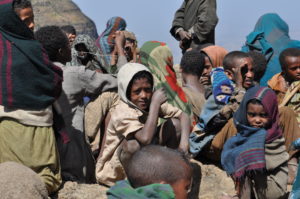
Simien Mountains National Park: A Gathering of Children in Northern Ethiopia
2020 may become a monument to global health collaboration, or not. We are all looking forward to 2021 with hope and a sigh of relief that COVID-fatigue may soon come to an end. Our neighbors, both near and far, need more than hope. Global collaboration means facing uncomfortable truths. As an advocate for access to healthcare for all women, my commitment requires being aware that many global communities are dependent upon the work women provide. The women with the least access to healthcare face the highest risk of health complications. Frontline healthcare workers in LMIC perform a vital role in protecting their communities from the ravages of COVID-19. The disproportionate risk to women is a clear example of the negative impact gender has on global healthcare.
Genderized Risks
A recent article in Lancet,COVID-19 Vaccines and Women’s Security discussed the negative affect of the pandemic on women in terms of increased risk for domestic violence, economic insecurity, food insecurity, and decreased access to reproductive health, each with significant consequences. The COVID-19 pandemic remains a reality for healthcare agencies as they plan for 2021. The contrast of daily challenges encountered by healthcare professionals in wealthy countries compared to low- and- middle- income countries is striking. The repercussions of unequal access to critical supplies, personal protective equipment, testing, and vaccines represents a global problem. Political and economic boundaries do not limit the spread of the coronavirus, on-going daily exposure to the virus by women who work in the community results in an unequal negative outcome. The problem becomes multiplied by spread to family, and possible death. The complexity involved in recognizing genderized access to healthcare is a tangle of politics, economy, and cultural factors.https://www.thelancet.com/journals/lancet/article/PIIS0140-6736(20)31873-0/fulltext
Essential Workers
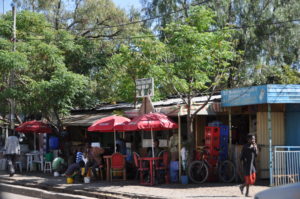
Busy Street Near Adama with Sidewalk Café
In 2019, the International Labor Organization published a paper entitled Gender Equity in the Health Workforce: Analysis of 104 Countries, the key message was centered on the overwhelming presence of women in non-physician healthcare and the need for changes in policies that will benefit all women. The ILO paper estimated that 70% of the global healthcare workforce, frontline and essential workers are women. The health of communities will rely on healthcare providers who will be responsible for delivering and facilitating community uptake of the vaccines. The personal security of the community healthcare worker is at risk from attacks and violence in many underserved communities. The genderized nature of sexual violence is a threat that was documented during the Ebola epidemic. Some male healthcare workers offered Ebola-related services, including vaccination, in exchange for sexual ‘favors’ from women and girls.https://www.thelancet.com/journals/lancet/article/PIIS0140-6736(20)32727-6/fulltext
Difficult Decisions
Issues of inequality are a difficult discussion to undertake. Here in the US, the disparity of the ravages of COVID-19 are easy to see and difficult to acknowledge. Brown and black communities, Native American communities, and people who are poor, are sicker and more likely to die. Access to the COVID-19 vaccine becomes a problem of deciding between those who are first in line, and who will be forced to wait. http://www.who.int/publications/i/item/health-workforce-policy-and-management-in-the-context-of-the-covid-19-pandemic-response
High-income countries, Vaccine Nationalism and Advanced Purchase Agreements (APA)
Vaccines against COVID-19 are available in the United States and the United Kingdom. Immunizing our frontline workers, doctors, nurses, and elderly is a plan that is also acceptable for other countries. The availability of the vaccine in other European countries (Germany, Italy, Spain, and France) will be determined by are strategically considering how much of the vaccine to procure. The fair and equitable distribution of the vaccines is severely tested as wealthy people push to the head of the line. The ease of access was demonstrated recently when Donald Trump and Rudy Giuliani were diagnosed with COVID-19 and received a level of care unattainable for the average citizen. Legal determinants are involved in issues of access to vaccines and are driven by vaccine nationalism [hyperlink]. Through mechanisms like legal determinants, governments can secure Advance Practice Agreements (APAs) directly with vaccine manufacturers. APAs can result in inequalities in access which may extend the duration of the pandemic as some countries wait in line. APAs can be used to secure vaccines as a part of an Advanced Market Commitment.
Global Vaccine Equity
Access to vaccines for low and middle- income countries (LMIC) is dependent on the generosity and commitment of many organizations. The participation of the Global Alliance for Vaccines and Immunizations (GAVI), the World Bank, UNICEF, World Health Organization, and the Bill and Melinda Gates Foundation are important. GAVI’s model of “public-private” partnerships also include private sector partners, research agencies, vaccine manufacturers, and other countries (Norway, Canada, Kuwait, Denmark, New Zealand, Netherlands, Singapore, Estonia). Ensuring a just and equitable distribution of vaccines to promote global health security becomes rhetorical when nationalism supersedes global well-being. Advanced Market Commitments, funded by donors through GAVI, can allow deals through APAs for guaranteed purchase of vaccines. http://iprhglobal.me/2WMFl6g
COVAX and CEPI
The COVID-19 Global Access (COVAX) was launched in April 2020. COVAX facility is a collaborative effort under the leadership of GAVI, World Health Organization (WHO), and the Coalition for Epidemic Preparedness Innovations (CEPI). The COVAX platform allows governments to access a diversified portfolio of COVID-19 vaccines as they become available. The goal of the COVAX initiative is securing two billion doses of approved vaccines and to beginning vaccination of 20% of the population in LMIC countries. The COVAX Facility currently has 190 participating economies and 86 economies have submitted detailed vaccine requests. Country preparedness includes regulatory preparedness as well as the availability of infrastructure, appropriate legal framework (for issues of vaccines as intellectual property) frameworks, training, and capacity.
Every life has Equal Worth: Ethical Considerations
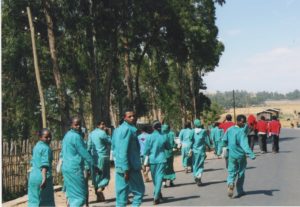
Children Walking to School (Ethiopia 2009)
The aphorism “the personal is the political” is powerful and relevant when discussing global health, genderized health, and pandemics. The geopolitical dominance of rich countries impact have a negative impact on LMIC in the battle for survival. The frontline workers and community health workers are an indispensable. Women who form the cadre of community healthcare workers provide information, contact tracing, and testing – in addition to managing their families and economies. It is important to search for equitable solutions that involve women in positions of leadership.
http://iprhglobal.me/3rwx30O
https://c8fbe10e-fb87-47e7-844b-4e700959d2d4.filesusr.com/ugd/ffa4bc_76b821f406b240a5ac841c9dec9cc5a1.pdf
https://www.who.int/hrh/resources/gender_equity-health_workforce_analysis/en/
https://www.cidrap.umn.edu/news-perspective/2020/12/studies-warn-covid-vaccine-access-issues-low-income-nations
https://www.medicalnewstoday.com/articles/covid-19-vaccine-low-income-countries-lose-out-to-wealthy-countries
https://www.nature.com/articles/d41586-020-03370-6
https://www.gavi.org/
https://www.thelancet.com/journals/lancet/article/PIIS0140-6736(20)31093-X/fulltext
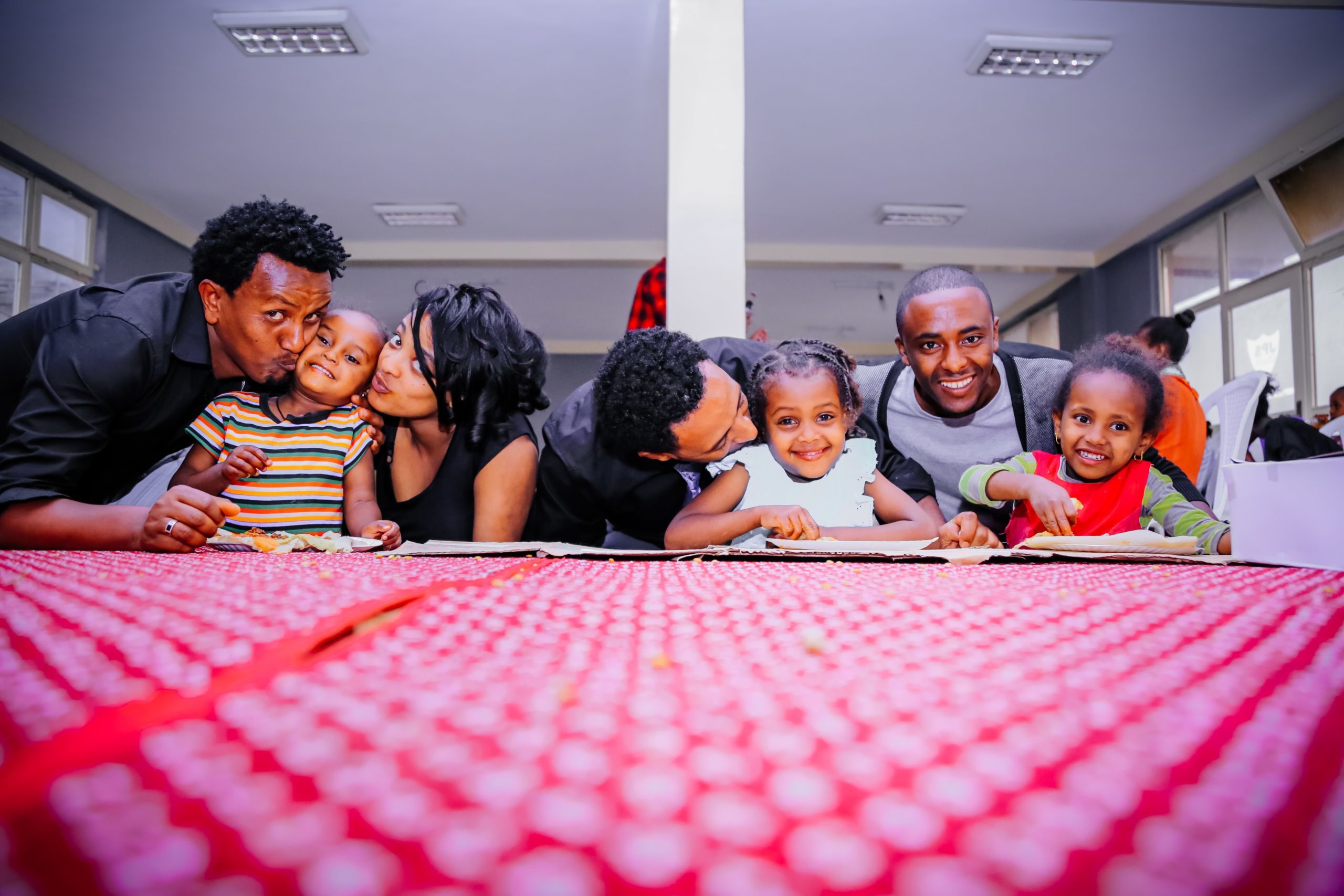 Breastfeeding Families
Breastfeeding Families